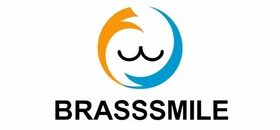Here is something to be appreciated: retirement feels far away until it suddenly comes knocking on your front door. Whether you are a 30-year-old starting your career or are halfway through your 50s wondering if you have saved enough, retirement planning should be on your radar. The sooner you prepare for it, the more choices you need. The later you prepare for it, well, it’s never too late to make a few wise moves.
Retirement Planning in the 30s
Start Early; Even If It’s For Small Amounts
Time is your greatest money power. A mere $50 accrued every month could turn into a fairly good nest egg $(“compound interest). The point? Start now, not later.
Establish an Emergency Fund First
Life happens. Keep in mind to set back from liquid money for 3-6 months that could cover for basic expenses, before depositing any funds in retirement account; so that in some tough time you will never have to resort to withdraw early from their retirement account.
Max Out Employer-Sponsored Plans.
Got a 401(k) with employer match? That’s free money. Max it out if you can-or at least contribute enough to get the full match. Every dollar counts.
Automate Contributions
Set it and forget it! Automated contributions make budgeting effortless and guarantee consistency on payments.
Start Investing in Index or Roth IRA
Set up a Roth IRA and explore index funds with low fees. These are perfect for long-term growth and provide certain tax benefits.
Retirement Planning in Your 40s
Assess Your Retirement Goals
This is your “mid-game.” How much savings do you have? How much will you require? Begin by defining your ideal retirement lifestyle to know what it is you wish to work towards.
Catch-Up Contributions Start Here
Turning 50 means you can make catch-up contributions, but one should consider increasing savings within their 40s to make the most of the compounding impact.
Balance Kids’ College and Your Retirement
Here’s a hard fact: you can borrow for college but not for retirement. Secure yourself financially first; help the kids if possible.
Eliminate Unnecessary Debt
Serious about clearing out high-interest debt? Credit cards, for example: less of that means more savings.
Reconsider Risk Tolerance and Asset Allocation
Your forties are a good time to rearrange your portfolio. Cut down on high-risk investments and gradually carve an avenue toward safe-haven assets.
Retirement Planning in Your 50s
Settle Your Calendar: Are You On Target?
Do the calculations. Use the retirement calculators. The gap, if any, between your current savings and target becomes an action tank in this decade.
Saving-Pushing Catch-Up Limits
In your fifties, make room to put just a smidge more into your 401(k) and IRAs instead of just the usual. That’s up to $7,500 more annually for your 401(k) in 2025. Use it!
Downsizing Simplify the Life
Time to go-lite. Less house, less subscriptions, cheaper car: any one of these means at least thousands freed up for our final cause!
Diversify Income Sources
Don’t just count on your job. Start thinking about rentals, freelance gigs, or anything that brings in passive income.
Estimate Health Costs
The secondary and one of the most major retirement expenses is healthcare. Look into HSAs, long-term care insurance, or Medicare planning.
Common Mistakes That You Should Avoid During Retirement
Procrastinate to Save
Time lost is compound interest lost. Start yesterday, if possible.
Depending Solely on Social Security
Social Security probably will not suffice. It is a supplement-there is not a full plan.
Ignoring Inflation
A dollar today will not be worth the same in 20 years. Your retirement plan has to factor the rise in the cost of living.
Withdrawing Early from a Retirement Account
The penalty can be very punishing. Avoid withdrawing early unless it is absolutely necessary because it blossoms into a spider-web that will catch you off in the future.
Good Tools and Resources to Use in Retirement Planning
Budgeting Apps
Applications such as Mint, YNAB (You Need A Budget), and Personal Capital can assist you in following your money and increasing your savings.
Online Retirement Calculators
Free calculators at Vanguard, Fidelity, or NerdWallet can forecast your savings and age at retirement.
Working With a Financial Planner
Working with a pro can help you create a plan tailored to your needs, manage the risk, and optimize on tax aspects.
Conclusion
Retirement planning is not a ‘one-size-fits-all.’ Your retirement plan in the 30s will be very much different from the one you need in your 50s, and that’s okay. The thing is, one must act early. If possible, start planting seeds early; however, a late bloomer can still plant seeds that bring them to financial freedom. This will be a big favor for your future self!
FAQs
1. How much should I have saved for retirement by age 40?
Usually, they say that by 40, your savings should be 3 times your annual salary. But what if I tell you every situation is different?
2. Can retirement planning be started at 50?
Of course. Feltly, one is never too late. Just be ready to save much more and cut down on spending.
3. Which retirement account is best for beginners?
Roth IRA is a very good starting point: it’s easy to open and grows tax-free.
4. Should I pay off my mortgage before retiring?
If that is possible, yes. Being debt-free greatly reduces monthly expenses in retirement.
5. What does 4% rule mean in planning for retirement?
It is a guideline that suggests withdrawing 4 percent from the retirement savings amount annually and never really running out of it.




